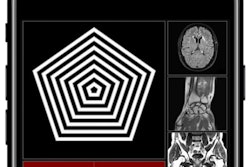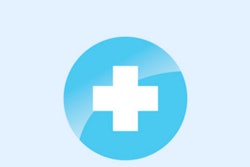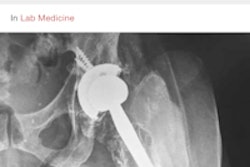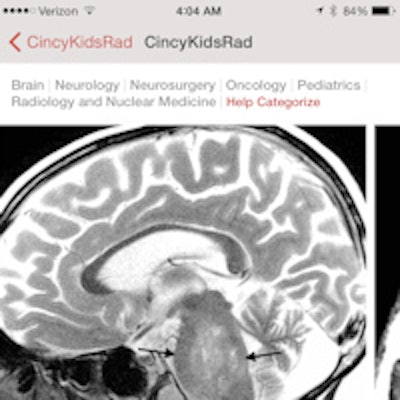
AuntMinnie.com presents the next article in an ongoing series highlighting notable mobile apps in radiology. In this installment, we take a look at the CincyKidsRad hospital account on Figure 1, a popular medical image sharing community. Run by the department of radiology and medical imaging at Cincinnati Children's Hospital Medical Center, the hospital account offers pediatric radiology education for its followers.
We chatted recently with one of the managers of the account, Dr. Alexander Towbin, to learn more about CincyKidsRad and how the Figure 1 account fits into the department's social media endeavors.
AuntMinnie: What inspired you to become the first hospital account on the Figure 1 app? Could you describe how hospital accounts work on Figure 1?
Towbin: About three years ago, we began thinking about our social media strategy. We decided that our overall goal was to be thought of as the trusted resource for pediatric radiology education. To reach that goal, we knew we needed to provide educational content for a number of different audiences. With that in mind, we set out to find ways to target and reach specific audiences.
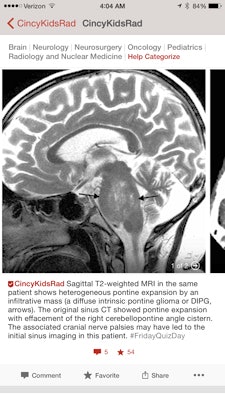 Sample educational case presented by CincyKidsRad on the Figure 1 image sharing community. All images courtesy of Dr. Alexander Towbin.
Sample educational case presented by CincyKidsRad on the Figure 1 image sharing community. All images courtesy of Dr. Alexander Towbin.Our first foray into social media was on Twitter (@CincyKidsRad). We use Twitter as a way to communicate with other radiology professionals and patient advocacy groups. Examples of the educational content that we tweet about include departmental research, live-tweeting educational conferences (#WeekendReview), and promoting national meetings where members of the department will be speaking.
Once Twitter was live, we launched our Facebook page. On Facebook, our goal is to educate our coworkers and our community about our department. While we mostly use this as a method of sharing our blog content, we have also used Facebook as a way to share departmental initiatives and times when we have been covered in the local or national news.
Our blog came next and is our primary way of sharing information with our patients and their families. We use the blog to help prepare families for what they can expect when they come to Cincinnati Children's for imaging. We cover a wide variety of topics, ranging from why we ask children not to eat before an ultrasound, how we help children with autism get through an MRI, and what to expect during a voiding cystourethrogram, to topics such as patient experience stories from the perspective of technologists and patients. We also try to have fun on the blog. One of our most popular posts was this past Halloween, when we x-rayed different candy bars and created sliders so that our patients could see both inside and outside of the candy bar.
Next we moved to Instagram. We thought that Instagram was uniquely suited for radiology education because it focused on the image. We worked to create a curriculum where we shared a teaching case every day of the week. We set up a repeating series of hashtags to help our audience know what to expect each day (#MSKMonday, #TummyTuesday, #NeuroWednesday, #ThoraxThursday, and #FridayQuizDay). We found that Instagram was a great medium for teaching and that we could reach a large number of people with each post.
Figure 1 noticed our Instagram account and reached out to us, asking us to join their platform. During these initial discussions with Figure 1, we explained that one of the limitations with education via many social media channels is that it is hard to judge the quality of the source. Lots of people post information online, but for the most part users do not know if they can trust the information they are reading. I believed that based on the reputation we had built through the other social media channels, our department was a trusted source. Because of this, we asked Figure 1 for a way to differentiate our department from other users. They came up with the concept of a hospital account.
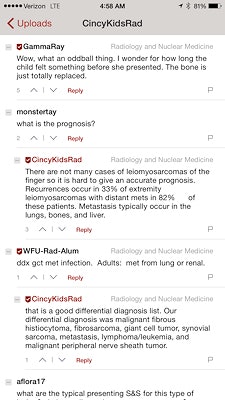 Users can ask questions and post comments on the CincyKidsRad Figure 1 hospital account.
Users can ask questions and post comments on the CincyKidsRad Figure 1 hospital account.What problem does the Figure 1 app in general and your account in particular solve or help address?
Our major goal on Figure 1 is to teach other medical professionals about pediatric radiology. Figure 1 is unique in that it is dedicated to medical education. While there are many similarities between Instagram and Figure 1, the most important difference is the user base. Instagram has over 300 million active users each month. While our potential reach is staggering, it can be difficult to find our information in the sea of other images. On Figure 1, the user base is smaller but more focused. Because the app is targeted toward medical education, the vast majority of users are healthcare workers.
What specific content do you provide and how do you envision that it will be used? How often is the account updated?
The content on Figure 1 and Instagram is similar. We post new cases five days a week, following the same schedule we devised for Instagram. The differences in content are related to differences between the two applications. The first difference is that Figure 1 allows us to upload more than one image per post. This is useful to show multiple findings or multiple views. Another cool feature of Figure 1 is the ability to upload an entire series. This is extremely helpful to allow users to scroll through a CT scan and understand the scope of the abnormality. Figure 1 also has more stringent limits on the amount of text allowed with each post (400 characters). This has forced us to make our teaching points more concise.
In both platforms, we try and tag each image with a number of relevant hashtags related to the disease, the findings, and the modality. This allows users to consume the content as they see fit. We believe that some users look at their feed each day and interact with the new case each day. Other users search for content on demand. For these users, the hashtags are crucial.
How has the experience been since you launched the Figure 1 hospital account back in March? Do you know how many people have been interacting with your hospital account so far?
Neither Figure 1 nor Instagram provides general users with detailed engagement statistics. However, we have been very happy with how our content has been received on Figure 1. Because of differences in the way the application is structured, we are less concerned with our number of followers on Figure 1 as compared to Instagram. Having said that, we now have 856 followers on Figure 1. We have found that Figure 1 is a much more engaged community. More users ask questions and want to know how the condition was managed.
 Dr. Alexander Towbin from Cincinnati Children's Hospital Medical Center.
Dr. Alexander Towbin from Cincinnati Children's Hospital Medical Center.Figure 1 tells us that our posts are very popular. They have shared some basic usage statistics with us. For example, we know that in March, when we had 421 followers, each post was seen on average by approximately 40,000 users.
What are your future plans for the hospital account? Are there any new features or content in the works?
We plan to continue posting high-quality pediatric radiology cases on a variety of conditions. A few times a year we focus on specific conditions or body parts. For example, during the week of Valentine's Day we highlighted cardiac cases, and because May is cystic fibrosis awareness month, we highlighted several related cases. Follow us on all of our channels to see our content.
I want to conclude by pointing out that while I am answering this interview, I couldn't do this work alone. Dr. Saad Ranginwala and Dr. Carl Merrow help me select cases and post content on Instagram and Figure 1. Saad Ranginwala in particular is instrumental in posting the cases and helping to manage these accounts. I am also fortunate to work with a great team on the blog.
My team of authors includes Glenn Minano, Catherine Leopard, Sarah Kaupp, Tony Dandino, Wendy Bankes, Bessie Ganim, and Tim O'Connor. In addition to acting as an author, Glenn Minano is our photographer, video editor, and blog manager. Finally, my wife, Meredith Towbin, edits all of our posts. Our social media outreach could not work without the help of these colleagues as well as the participation of everyone in my department.
The Figure 1 app can be downloaded for free from the iTunes Store and an Android version is also available from Google Play.






